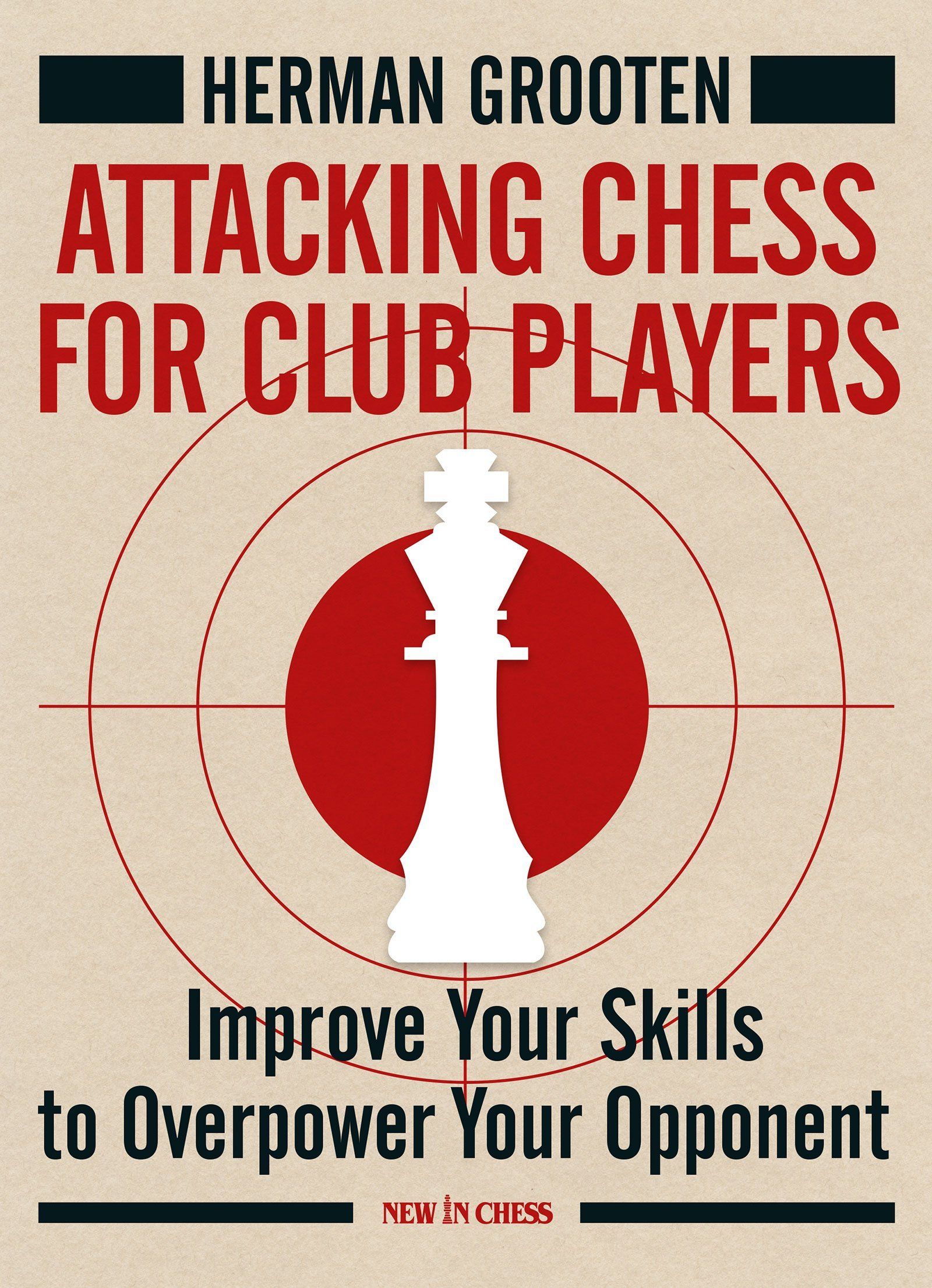“Modern Chess is too much concerned with things like pawn structure. Forget it, checkmate ends the game.” – GM Nigel Short
Our BOOK OF THE WEEK is Attacking Chess for Club Players by Herman Grooten.
After the immense success of his award-winning classic Chess Strategy for Club Players, Herman Grooten has now written an equally accessible primer on attacking chess. He teaches how to spot opportunities, exploit weaknesses, bring your forces to the front line, and strike at the right moment.

Every chess player loves to attack the enemy King. Your goal is clear, your thinking is concrete, your creativity is flowing and direct victory is just around the corner. Few things in life are better than successfully conducting a blistering attack on your opponent’s King! But how good are you actually at attacking? Have you ever analyzed your efforts? Looked at calculation errors, missed opportunities and derailed efforts?
After the immense success of his award-winning classic Chess Strategy for Club Players, Herman Grooten has now written an equally accessible follow-up primer on attacking chess. He teaches you how to spot opportunities, exploit weaknesses, bringing your forces to the frontline and striking at the right moment. Grooten concentrates on training the most valuable skills for this process: visualizing, structuring, anticipating, calculating, memorizing and other mental aspects. This is not just another collection of useful thematic moves and motifs but a complete and highly structured course of attacking techniques. And with fantastic new examples, clear explanations and many instructive exercises.
Here is a sample.
Chapter two: Cooperation between the pieces
Cooperation between the pieces is extremely important. It is not so easy to indicate what exactly is meant by such cooperation between the pieces in chess literature. We can imagine a few things, though. There are different forms of cooperation, which will be discussed further in this chapter. We will single out two elementary phenomena:
Cooperation against one point
We only need to think of the ‘banal’ Scholar’s Mate in order to see that it can be important to be able to attack a weak point with two different pieces. If the opponent neglects its protection, the pieces, working together, will be able to achieve a certain result. Here are two other, not too difficult examples:
Control of square
It’s time to look at a few examples from competitive practice.
Reviews of the book:
“Judging from the title, it shouldn’t really be for me, but I’ve enjoyed it enormously (..) This book presents the material in a relaxed, easy to read way with surprising examples and little stories that keep you awake and interested throughout.” – GM Matthew Sadler
“Providing thought-provoking examples (..) There is quite a lot of analysis to allow the keen player to see all the nuances of a particular theme and once you think you have mastered it there are a few more to reinforce the idea (..) A highly readable account of a bamboozling art, but vital if you want to raise your rating.” – IM Gary Lane
Attacking Chess for Club Players can be purchased on our website using the link below.
- New Release: Chess Analysis – Reloaded - March 9, 2024
- Review: The Art of The Endgame – Revised Edition - February 14, 2024
- Review: Study Chess with Matthew Sadler - December 13, 2023
